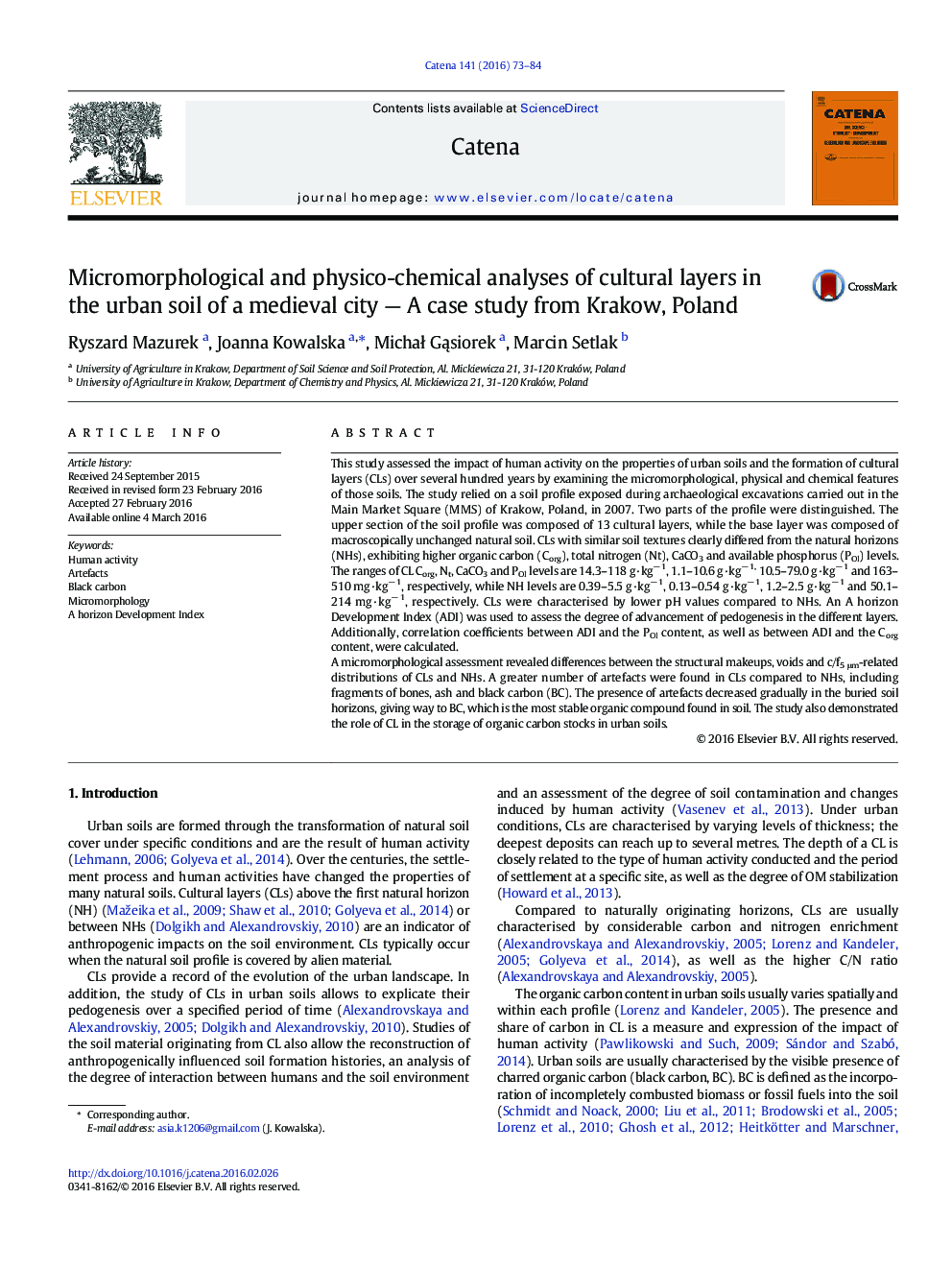| Article ID | Journal | Published Year | Pages | File Type |
|---|---|---|---|---|
| 6407905 | CATENA | 2016 | 12 Pages |
â¢The work presents a well-preserved soil profile that shows pedogenesis in a medieval city in Central Europe.â¢The cultural layers revealed the presence of artefacts.â¢Cultural layers were distinguished from natural horizons by microstructure type, porosity and c/f5 μm-related distribution.â¢Cultural layers in urban soils constitute reservoirs of black carbon.
This study assessed the impact of human activity on the properties of urban soils and the formation of cultural layers (CLs) over several hundred years by examining the micromorphological, physical and chemical features of those soils. The study relied on a soil profile exposed during archaeological excavations carried out in the Main Market Square (MMS) of Krakow, Poland, in 2007. Two parts of the profile were distinguished. The upper section of the soil profile was composed of 13 cultural layers, while the base layer was composed of macroscopically unchanged natural soil. CLs with similar soil textures clearly differed from the natural horizons (NHs), exhibiting higher organic carbon (Corg), total nitrogen (Nt), CaCO3 and available phosphorus (POl) levels. The ranges of CL Corg, Nt, CaCO3 and POl levels are 14.3-118 g·kgâ 1, 1.1-10.6 g·kgâ 1, 10.5-79.0 g·kgâ 1 and 163-510 mg·kgâ 1, respectively, while NH levels are 0.39-5.5 g·kgâ 1, 0.13-0.54 g·kgâ 1, 1.2-2.5 g·kgâ 1 and 50.1-214 mg·kgâ 1, respectively. CLs were characterised by lower pH values compared to NHs. An A horizon Development Index (ADI) was used to assess the degree of advancement of pedogenesis in the different layers. Additionally, correlation coefficients between ADI and the POl content, as well as between ADI and the Corg content, were calculated.A micromorphological assessment revealed differences between the structural makeups, voids and c/f5 μm-related distributions of CLs and NHs. A greater number of artefacts were found in CLs compared to NHs, including fragments of bones, ash and black carbon (BC). The presence of artefacts decreased gradually in the buried soil horizons, giving way to BC, which is the most stable organic compound found in soil. The study also demonstrated the role of CL in the storage of organic carbon stocks in urban soils.
Graphical abstractDownload full-size image
